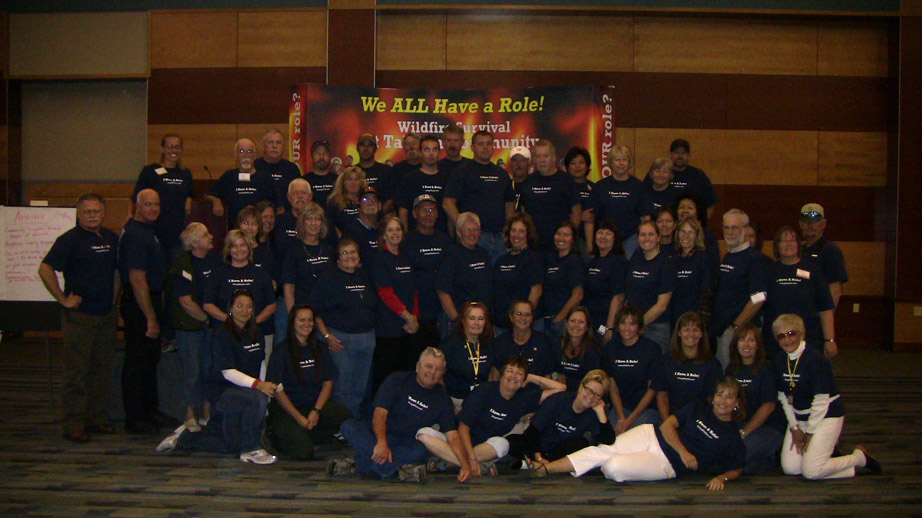2011 Nevada Wildland Urban-Interface Fire Summit
January 31st, 2012
On September 19 and 20, Ed Smith and his team held the fifth annual Nevada Wildland-Urban Interface Fire Summit at University of Nevada, Reno’s Joe Crowley Student Union. The purpose of the summit is to invite representatives from Nevada’s 173 “extreme”, “high” and “moderate” wildfire-hazard rated communities, fire service personnel responsible for those communities, county managers, and others to discuss how to lower their hazard ratings and to promote action at the local level. As part of the Living With Fire program, this event is made possible with funding from the Bureau of Land Management, the Nevada Fire Safe Council, Sierra Front Wildfire Cooperators, and the Nevada Division of Forestry in cooperation with the USDA Forest Service.
Fire Chief Mike Brown, from North Lake Tahoe Fire Protection District, emceed the event which was organized around the theme “I have a role.” As we make the important shift in our thinking about the wildfire threat, a shift from protecting communities at all costs to preparing them to withstand wildfire, it’s important to celebrate the various roles people have in community wildfire preparedness. In addition to homeowners—who probably have the most important role—we discussed the roles of firefighters, landscapers, construction workers, and politicians like State Senator Gail Griffin (AZ), who spoke about her experiences while evacuating during the Monument Fire this summer. We also heard from proactive housing developer, Chris Heftel. He spoke about the decisions he made when designing and building River Bluff Ranch, a new community in Spokane, Wash. To him, building a community capable of withstanding wildfire by creating defensible space, providing adequate road access for resident evacuation and fire engines, using ignition resistant building materials, installing water sources for fighting fires, and situating homes so fire racing up steep slopes would be less likely to ignite them, just made good business sense.
A few key results from the event include:
- 111 people attended
- 13 of Nevada’s 17 counties were represented
- 35 percent of the participants were community representatives
- 32 percent of the participants were attending for the first time
- 33 of the 173 “extreme,” “high” or “moderate” hazard communities were represented, with three additional communities from the Lake Tahoe Basin.
More importantly, though, are the responses to surveys we collected from participants. Namely, that 100 percent of respondents said they planned to take some sort of action to reduce the wildfire threat upon returning home, including communicating with neighbors and absentee owners, educating and informing community members, creating defensible space, and getting more involved with their Nevada Fire Safe chapter. A full report on the Fire Summit can be found at LivingWithFire.info.
One attendee, DebiLynn Smith of Topaz Ranch Estates in Douglas County, provided this glowing comment: “Thanks to my participation in the 2011 WUI Summit, I now have the knowledge, tools and motivation to help myself, my family, my neighbors and my community prepare for the threat of wildfire.”
As we work to decrease the wildfire-hazard rating of Nevada’s at-risk communities and create fire adapted communities capable of surviving wildfire with little or no firefighter assistance, getting community members informed and engaged will be crucial. After all, wildfire survival takes a community, and we all have a role.
